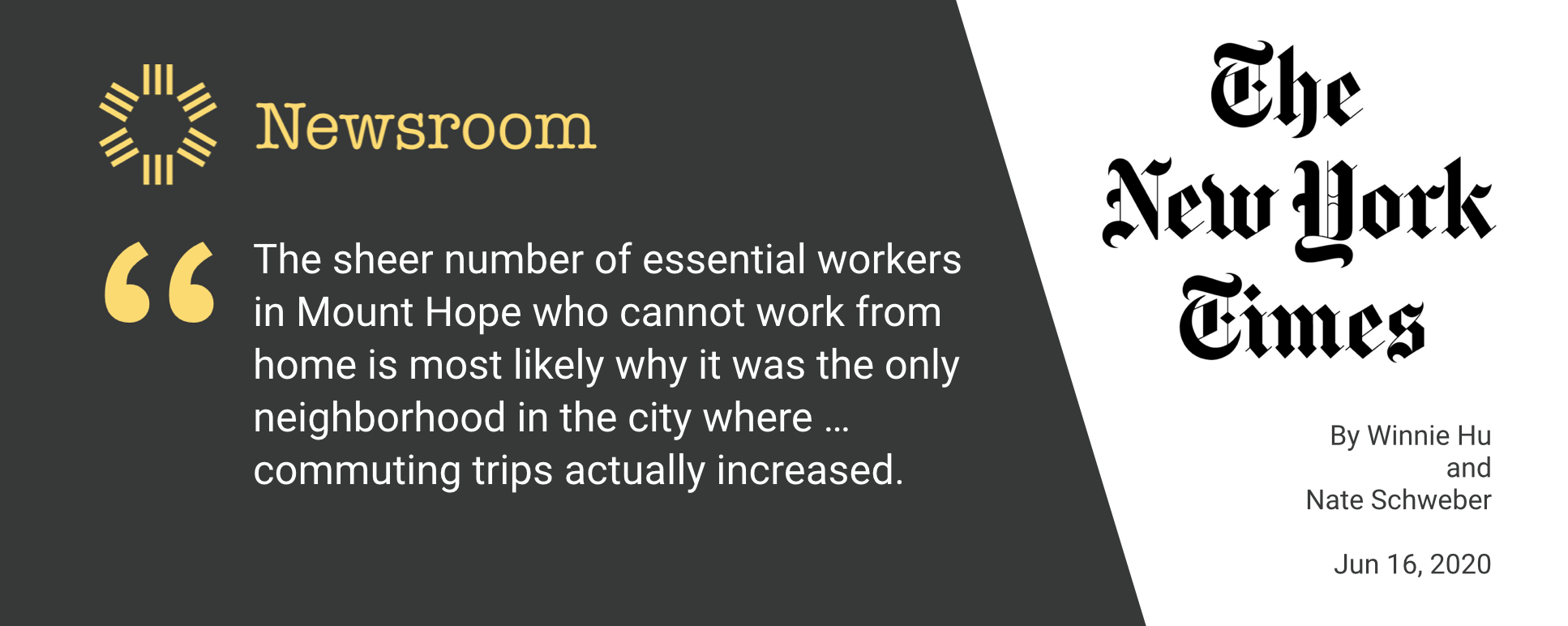
When Rich New Yorkers Fled, These Workers Kept the City Running

The Bronx had New York’s highest COVID-19 death rate, and is home to the Mount Hope neighborhood, where essential worker travel actually increased during the pandemic.
While residents in New York City’s wealthiest neighborhoods stopped traveling (and even left town), essential workers had no such luxury. This New York Times article delves into the risks essential workers shouldered during the height of the city’s pandemic.
StreetLight’s analysis of travel in neighborhoods including Mount Hope, South Jamaica, East Harlem, and Cobble Hill found that vehicle, pedestrian, and bicycle travel decreased in wealthier neighborhoods while essential workers kept on commuting.
These included Albertha Johnson, an essential worker helping domestic abuse victims in Harlem, who caught the virus in April but could only take two weeks off from work to recover.
Across New York City, commutes fell by 34% with StreetLight’s more granular analytics revealing only a 5% decline in the Woodside neighborhood and an actual 4% increase in Mount Hope.
Analyze by-county travel activity on the fly using StreetLight’s VMT Monitor. Go deeper for a more granular perspective on vehicular, bike and pedestrian travel using StreetLight’s Metrics.
Read the full New York Times story here